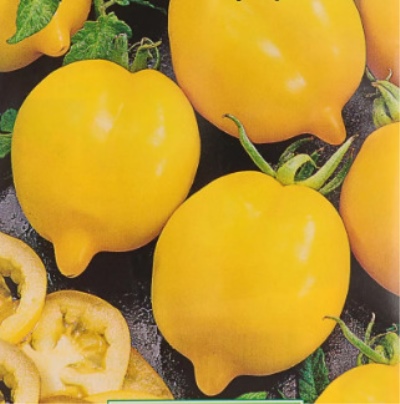
- Authors: Kachainik V.G., Gulkin M.N., Karmanova O.A., Matyunina S.V.
- Year of approval: 2015
- Category: grade
- Growth type: indeterminate
- Appointment: fresh consumption, for pickling and canning, for whole-fruit canning
- Ripening period: mid-season
- Ripening time, days: 116-120
- Growing conditions: for open ground, for film greenhouses
- Transportability: Yes
- Bush size: tall
Citrus orchard is a late-ripening bristle selection tomato species. It is grown even in the harsh climatic conditions of Siberia, where the summer is short. The first fruits have time to ripen on the bush, the rest are harvested before the first frost. Tomatoes ripen indoors without losing quality.
Description of the variety
The citrus garden is versatile, suitable for growing in greenhouse conditions and outdoors. The bush reaches 1.6-1.8 meters in height and is indeterminate (unlimited in growth). The variety has a rather thin stem, it must be tied to a support. The fruits are tied in bunches, 3-4 clusters are formed on one bush, with 20-30 tomatoes on each. A decorative look is characteristic of the bushes. Lemon yellow fruits in clusters look very impressive.
The main qualities of the fruit
Fruits are heart-shaped oval with a pronounced spout at the top. Due to their yellow-orange color and shape, tomatoes at the stage of ripeness resemble lemons. The main characteristics of the fruit:
small fruits, weighing 50-100 grams, 5-7 cm in length;
dense and elastic skin of the fruit, does not undergo cracking;
dense fleshy pulp with thick juice, the seeds are located closer to the core;
ripe tomatoes can be stored for up to 5 days and tolerate transportation well.
Taste characteristics
Ripe tomatoes of the Citrus Garden are pleasant and sweetish in taste with a slight tomato sourness. The aroma is pleasant and pronounced.
The fruits are suitable both for fresh consumption and for preparing the first and second courses or for preservation. Small orange fruits look good in jars. Tomatoes with dense skin do not crack and retain their beautiful appearance.
Ripening and fruiting
The citrus orchard is a carp variety with a high degree of fruiting. The variety belongs to the mid-season (115-120 days from germination to the beginning of fruiting). 3-4 clusters with fruits are formed on the bush. It is better to tie them to a support. After abundant flowering, up to 20 ovaries with fruits remain on the bush. The ovary occurs partially. On the open ground, it is better to remove the upper brushes, they do not have time to fully form. 3-4 bunches should be left. Then the bush will have enough nutrients and sunshine to form fruit.
The fruits ripen by mid-August, about the 4th month after sowing. In greenhouse conditions, the fruits can sing until mid-October. Under cool storage conditions, maturation can be extended to 1-2 months. Tomatoes are stored for a long time, until the end of autumn.
Yield
The Citrus Garden variety brings a rich harvest. With proper care and feeding, up to 2.5 kg of fruit can be harvested from one bush. For a higher yield, the bushes are formed into 1-2 stems, stepchildren must be removed. It is better to feed with mineral natural fertilizers up to 10 times a season (2 times a month).
The timing of planting seedlings and planting in the ground
Sowing is done 70-80 days before planting in the ground. Before planting, the seeds can be additionally treated with growth stimulants. The soil is used universal, or peat soil and humus are mixed in equal proportions. Seeds are laid to a depth of 1-2 cm, if necessary, the boxes are tightened with foil.The sprouts require a constant temperature of 22-25 degrees and daylight hours for at least 15 hours. Mandatory diving of sprouts at the stage of 1-2 leaves. Before planting, the seedlings are hardened for 2-3 weeks, leaving them outside in the daytime and increasing the residence time. In open ground, seedlings are planted only after the completion of night frosts. In greenhouse conditions, seedlings feel good by mid-May.

Growing tomato seedlings is an extremely important process, because it largely depends on whether the gardener will be able to harvest at all. All aspects must be taken into account, from seedbed preparation to planting in the ground.
Landing scheme
For a high yield, a loose planting is suitable. No more than 4 bushes per 1 sq. meter. The bushes are spreading and dense, with a denser planting they will interfere with each other. Leave at least 50 cm between the bushes. Tomatoes are best formed into 1-2 stems, with 3-4 clusters on each. So enough sunlight and nutrients will get on the fruits, and they will have time to ripen.

Growing and care
The variety is unpretentious and does not require special care. Basic rules for growing tomatoes Citrus garden:
sufficient watering in the evening;
waterlogging of the soil is not allowed;
fertilizing with mineral fertilizers;
loosening of the soil and timely weeding;
tying up the stem and hands;
obligatory removal of stepchildren;
pinching the main stem after the fruit has formed.
Resistance to diseases and adverse weather conditions
The citrus orchard is a selective variety and has been hardened against most of the common pathogens and fungal diseases typical of the nightshade family. The variety is resistant to drought and temperature extremes. Even late blight does not affect the leaves when the night temperature drops. At the end of summer, with an increase in humidity and heavy rains, to prevent the disease, you can remove the lower leaves until yellowness appears.




A plant needs different micronutrients at each stage of growth. All fertilizers can be divided into two groups: mineral and organic. Folk remedies are often used: iodine, yeast, bird droppings, eggshells.
It is important to observe the rate and period of feeding. This also applies to folk remedies and organic fertilizers.



























































































